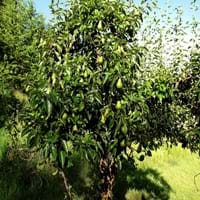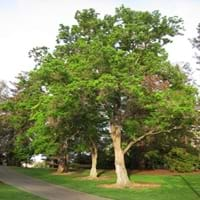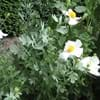Life Span
Perennial
Perennial
Origin
Europe, Western Asia
Eastern Asia, China
Types
Green Anjou, Red Anjou, Bartlett
Candleberry tree
Number of Varieties
Not Available
Habitat
Humid climates, moist forests
Saline Soils, Upland, Upland soils
USDA Hardiness Zone
3-8
8-10
Sunset Zone
2a, 2b, 3a, 3b, 4, 5, 6, 7, 8, 9, 14, 15, 16, 17, 18
H2, 8, 9, 12, 13, 14, 15, 16, 18, 19, 20, 21
Habit
Oval or Rounded
Oval or Rounded
Minimum Height
Not Available
Minimum Width
Not Available
Flower Color
White
Yellow
Flower Color Modifier
Not Available
Bicolor
Fruit Color
White, Yellow, Red, Green, Yellow green
White, Ivory
Leaf Color in Spring
Light Pink, Red, Green, Light Green
Green
Leaf Color in Summer
Dark Green
Green
Leaf Color in Fall
Purple, Dark Green, Burgundy
Yellow, Red, Orange
Leaf Color in Winter
Light Green
Not Available
Leaf Shape
Oval with a pointed tip and fine teeth along their edges
Heart-shaped
Plant Season
Early Spring, Winter
Spring, Summer, Fall
Sunlight
Full Sun
Full Sun
Type of Soil
Loamy, Sandy
Clay, Loam, Sand
The pH of Soil
Acidic
Acidic, Neutral, Alkaline
Soil Drainage
Well drained
Average
Bloom Time
Fall, Summer
Spring
Tolerances
Drought
Cold climate, Drought, Pollution, Salt
Where to Plant?
Ground
Ground
How to Plant?
Grafting, Seedlings
Grafting, Seedlings, Stem Planting, Transplanting
Plant Maintenance
Low
Medium
Watering Requirements
Medium, Water less during winter, Water more in summer, when new, water every week
Average Water Needs, Medium, Requires watering in the growing season
In Summer
Lots of watering
Lots of watering
In Spring
Moderate
Moderate
In Winter
Average Water
Average Water
Soil pH
Not Available
Acidic, Neutral, Alkaline
Soil Type
Not Available
Clay, Loam, Sand
Soil Drainage Capacity
Not Available
Average
Sun Exposure
Full Sun, Partial Sun
Full Sun
Pruning
Remove damaged leaves, Remove dead branches, Remove dead leaves
Remove damaged leaves, Remove dead leaves, Remove dead or diseased plant parts, Remove deadheads
Fertilizers
Ammonium Nitrate, Fertilize the soil before planting
fertilize in growing season, Less fertilizing, Nitrogen
Pests and Diseases
Red blotch
Insects, Red blotch
Plant Tolerance
Drought
Cold climate, Drought, Salt
Flowers
Yes
Insignificant
Flower Petal Number
Single
Single
Foliage Texture
Medium
Medium
Foliage Sheen
Glossy
Matte
Attracts
Aphids, Birds, Butterflies, Pear psylla
Not Available
Allergy
Anaphylaxis, Digestive Problems, Itchiness, Swelling
Nausea, Toxic, Vomiting
Aesthetic Uses
Cottage Garden
Landscape Designing
Beauty Benefits
Good for skin, Improve skin tone, Making cosmetics, Moisturizing, Skin Problems
No Beauty Benefits
Environmental Uses
Air purification, Shadow Tree
Absorbs greenhouse gases, Absorbs huge amounts of CO2, Air purification, Amazing growth rate, Erosion control, Food for insects, Forms dense stands, Nesting sites for birds, No fertilizer, pesticides, or herbicides needed, Prevent Soil Erosion, Shadow Tree, Shelter for wildlife, Soil protection, soil stabilisation, Used to establish native woodland, Very little waste, Wildlife, Windbreak
Medicinal Uses
Cancer, Cardiovascular problems, cholesterol-lowering, Detox, Diabetes, Energy, Fiber, Heart problems, High blood pressure, Obesity, Treating diverticulosis, Weight loss
Boils
Part of Plant Used
Bark, Fruits, Leaves
Fruits, Leaves, Seeds
Other Uses
Used As Food
Employed in herbal medicine, Showy Purposes, Used as firewood, Used for its medicinal properties
Used As Indoor Plant
No
No
Used As Outdoor Plant
Yes
Yes
Garden Design
Not Available
Feature Plant, Shade Trees, Street Trees
Botanical Name
PYRUS communis
TRIADICA sebifera
Common Name
Pear
Chinese Tallow
In Hindi
नाशपाती
चीनी तेल
In German
Birne
chinesisch Talg
In French
Poire
chinesisch Talg
In Spanish
Pera
suif chinois
In Greek
Αχλάδι
κινέζικο ζωικό λίπος
In Portuguese
Pera
sebo chinesa
In Polish
Gruszka
chiński łój
In Latin
Orbis
Chinese adipe
Phylum
Vascular plant
Embryophyta
Class
Magnoliopsida
Magnoliopsida
Order
Rosales
Malpighiales
Family
Rosaceae
Euphorbiaceae
Clade
Angiosperms, Eudicots, Rosids
Angiosperms, Eudicots, Rosids
Subfamily
Amygdaloideae
Euphorbioideae
Number of Species
Not Available
Season and Care of Pear and Chinese Tallow
Season and care of Pear and Chinese Tallow is important to know. While considering everything about Pear and Chinese Tallow Care, growing season is an essential factor. Pear season is Early Spring and Winter and Chinese Tallow season is Early Spring and Winter. The type of soil for Pear is Loamy, Sandy and for Chinese Tallow is Clay, Loam, Sand while the PH of soil for Pear is Acidic and for Chinese Tallow is Acidic, Neutral, Alkaline.
Pear and Chinese Tallow Physical Information
Pear and Chinese Tallow physical information is very important for comparison. Pear height is 1,219.20 cm and width 800.00 cm whereas Chinese Tallow height is Not Available and width Not Available. The color specification of Pear and Chinese Tallow are as follows:
Pear flower color: White
Pear leaf color: Light Pink and Red, Green, Light Green
Chinese Tallow flower color: Yellow
- Chinese Tallow leaf color: Green
Care of Pear and Chinese Tallow
Care of Pear and Chinese Tallow include pruning, fertilizers, watering etc. Pear pruning is done Remove damaged leaves, Remove dead branches and Remove dead leaves and Chinese Tallow pruning is done Remove damaged leaves, Remove dead leaves, Remove dead or diseased plant parts and Remove deadheads. In summer Pear needs Lots of watering and in winter, it needs Average Water. Whereas, in summer Chinese Tallow needs Lots of watering and in winter, it needs Average Water.





